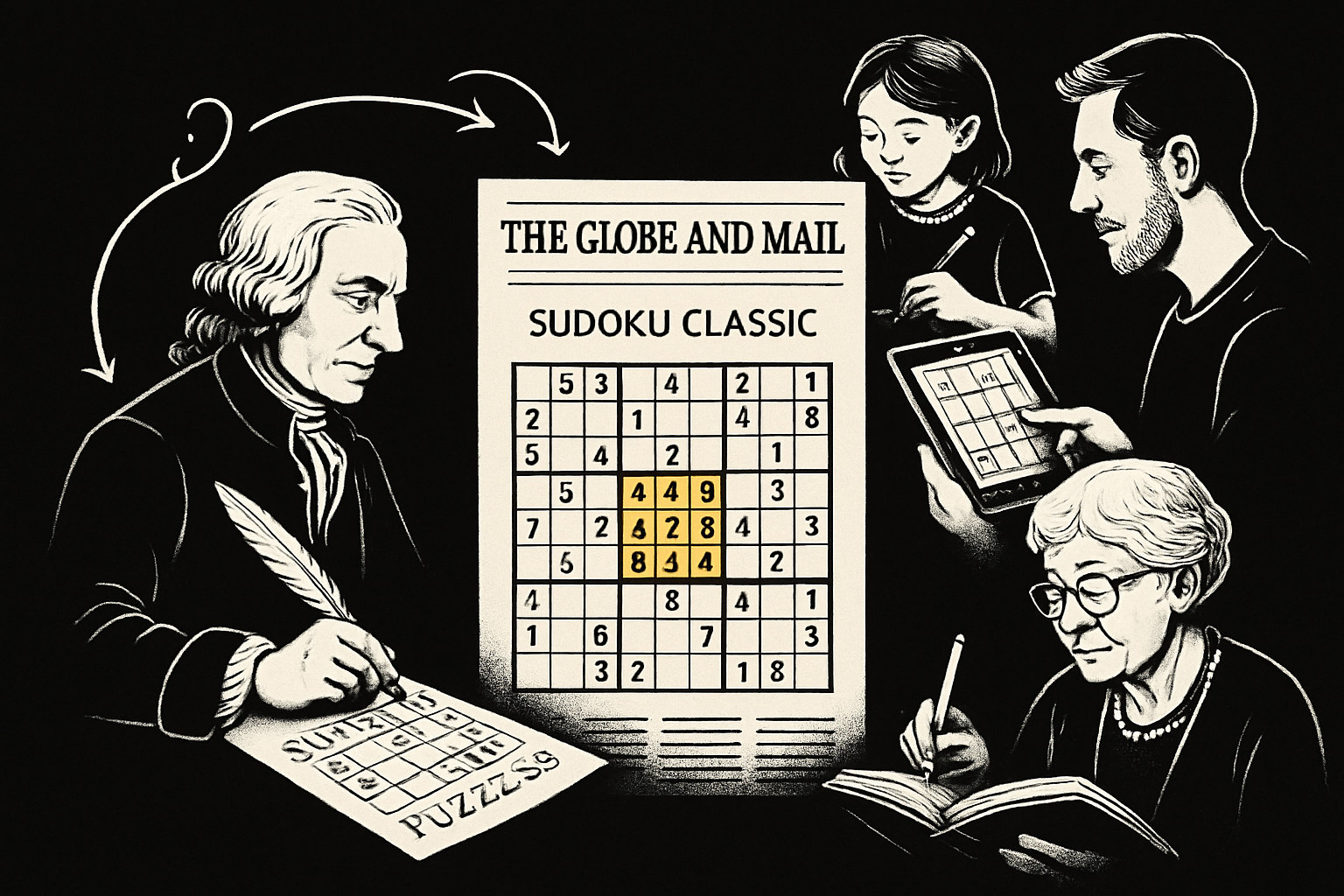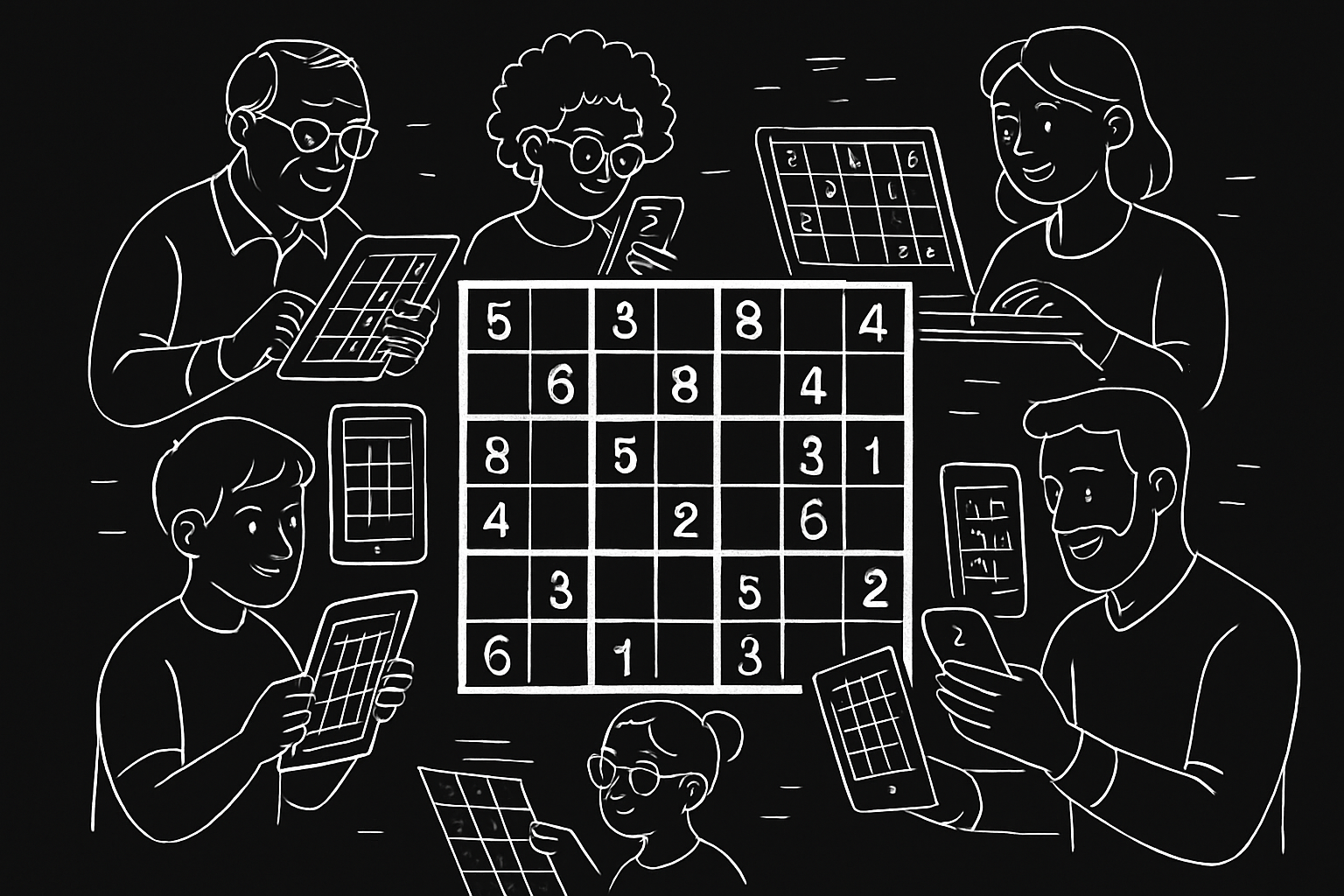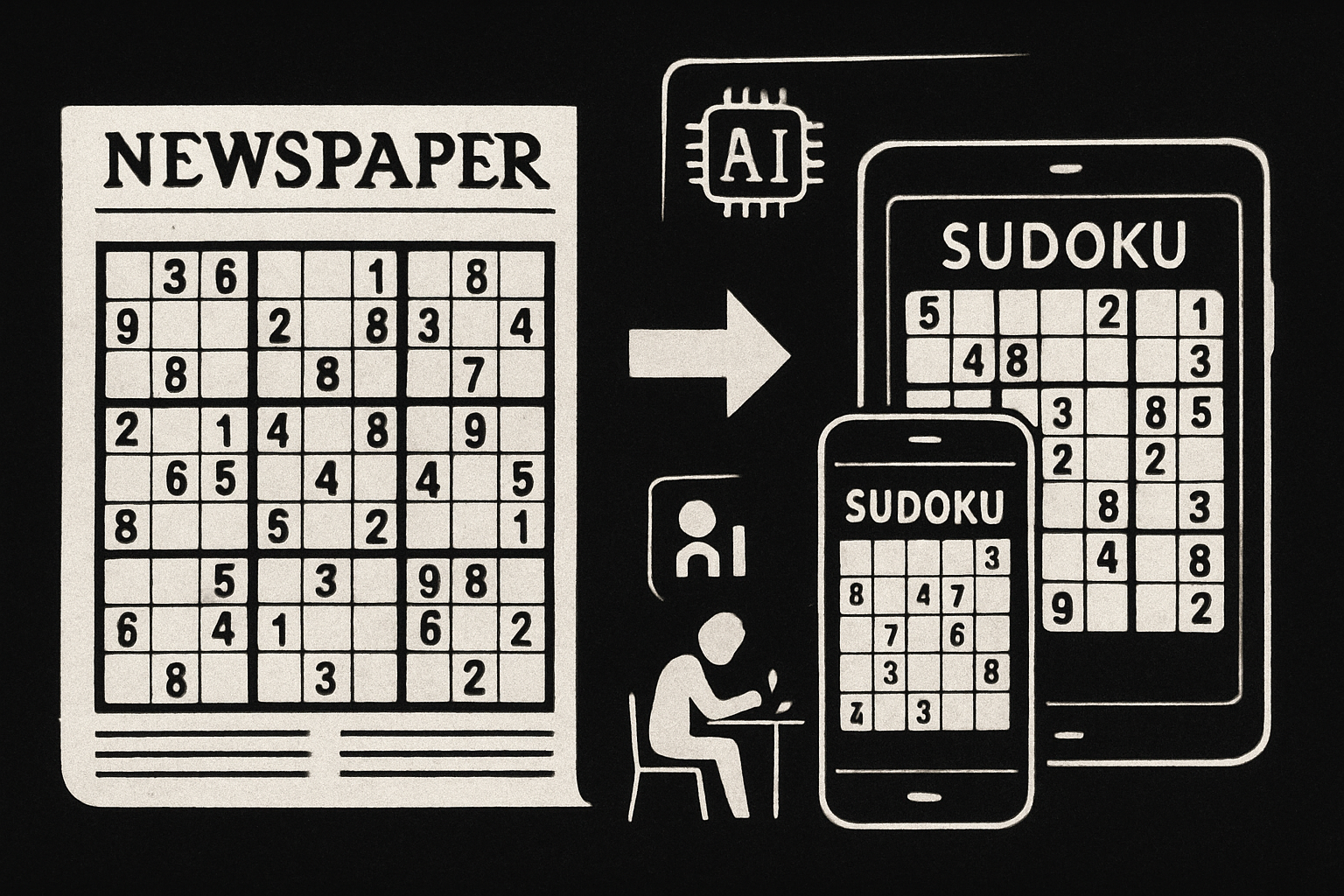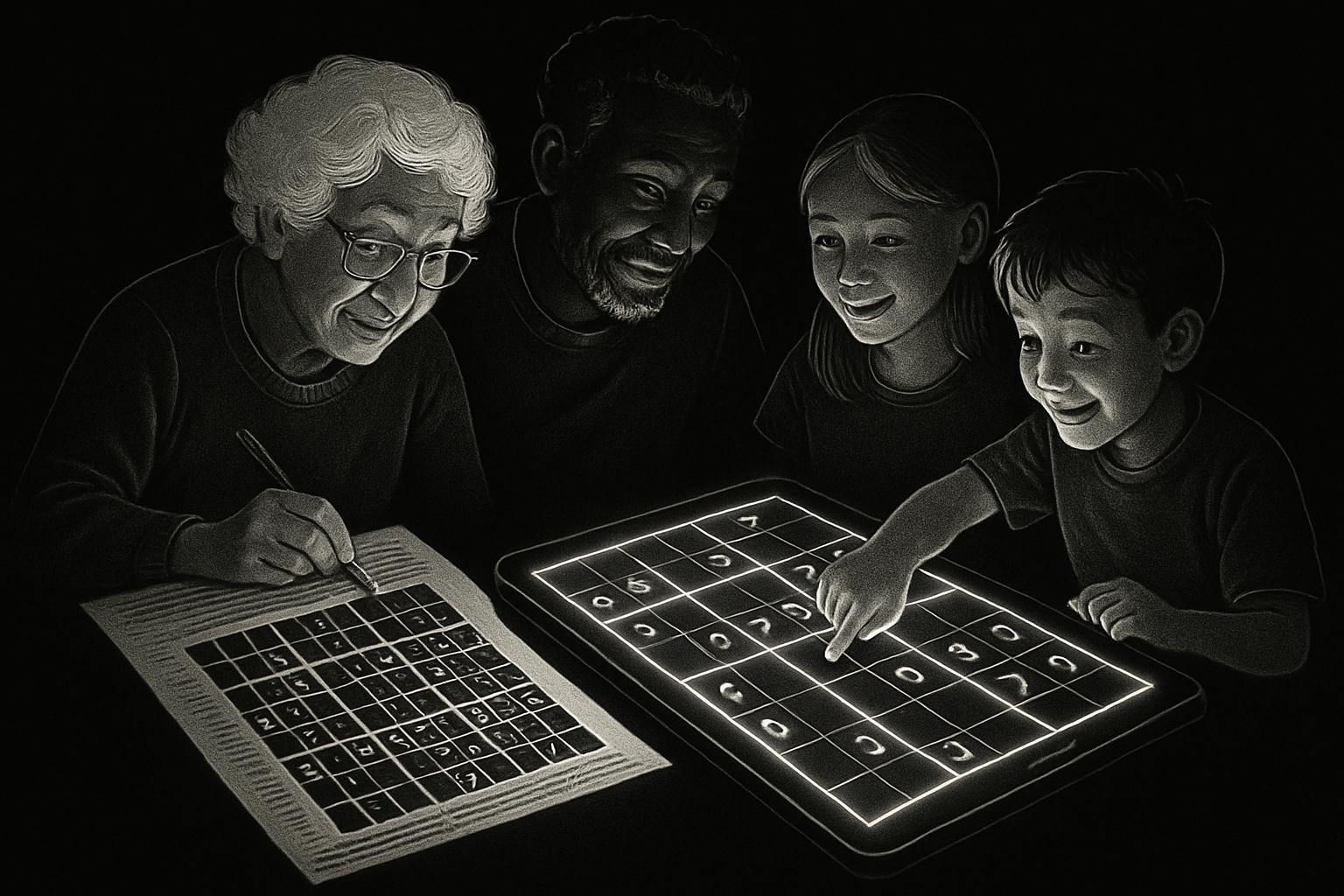In a world dominated by screens, the satisfying feel of a sudoku wooden puzzle is making a powerful comeback for 2025. People everywhere are rediscovering the joy of solving puzzles they can actually touch, see, and move with their hands.
This guide is your all-in-one resource to understanding, playing, and mastering the sudoku wooden puzzle. We’ll journey from the basics—what these puzzles are and why they’re trending—to advanced strategies, care tips, and top picks for every puzzle lover.
Ready to unlock the mental challenge and beauty of wooden Sudoku? Dive in to discover practical tips and modern strategies for every skill level.
What is a Sudoku Wooden Puzzle?
Sudoku wooden puzzles are making a big comeback in 2025, offering a unique blend of classic logic and hands-on craftsmanship. But what exactly sets a sudoku wooden puzzle apart from the digital or paper versions you might already know? Let’s explore how these tactile puzzles evolved, what types are trending, and why so many puzzle lovers are making the switch.
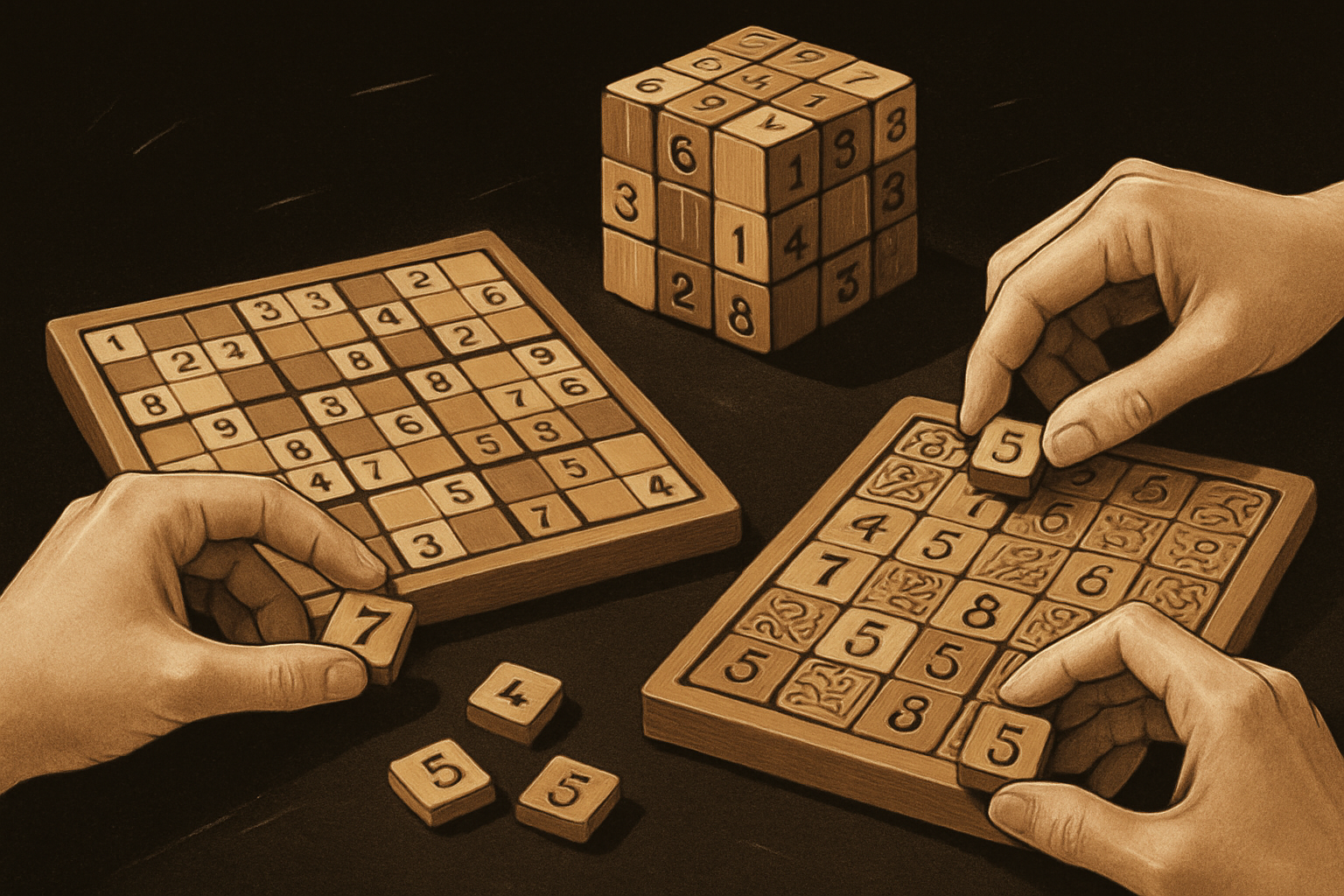
Origins and Evolution of Sudoku Wooden Puzzles
The story of the sudoku wooden puzzle begins with the global rise of Sudoku itself, a logic-based number puzzle that gained massive popularity in the late 20th century. While most people first encountered Sudoku on paper or screens, the shift to wooden formats began as puzzle enthusiasts searched for a more engaging, hands-on experience.
Unlike their digital counterparts, sudoku wooden puzzles invite players to physically move and arrange tiles, offering a satisfying sensory experience. The growth in eco-friendly materials and a renewed interest in unplugged entertainment have fueled a surge in popularity. Notably, the launch of 3D Sudoku cubes and artisan-crafted boards in the early 2020s marked major milestones.
Classic designs, such as the WE Games Wooden Sudoku Puzzle Board, set the standard for quality and playability. According to toy industry reports, sales of sudoku wooden puzzles rose sharply in 2024 and are projected to climb another 15% into 2025. These puzzles now appeal to both traditionalists and modern puzzle fans, blending nostalgia with innovative design. For those intrigued by tactile and aesthetic puzzle play, the Block Sudoku Woody Puzzle Game highlights just how much fun the wooden format can be.
Types and Variations Available in 2025
In 2025, sudoku wooden puzzle options have never been more diverse. The classic 9×9 board with removable numbered tiles remains a favorite, offering a familiar challenge in a sturdy, eco-friendly package. For those seeking a twist, 3D Sudoku cubes—like Kubiya’s Wooden Sudoku Cube Puzzle—add a new layer of complexity by requiring players to solve all six faces at once.
Mini travel sets and deluxe editions cater to different lifestyles, with magnetic pieces making play on the go easy. Specialty variants, such as colored tiles or engraved boards, bring extra flair and accessibility to the mix.
Here’s a quick comparison:
| Type | Challenge Level | Portability | Aesthetic Appeal |
|---|---|---|---|
| Classic 2D Board | Moderate | Medium | Traditional |
| 3D Cube | High | Low | Unique |
| Mini Travel Set | Easy-Moderate | High | Compact |
| Deluxe/Artisan | Varies | Low | Decorative |
Custom and artisanal sudoku wooden puzzles are on the rise, especially as unique gifts. While 2D boards are perfect for beginners and families, 3D cubes provide a real brain workout for advanced users.
Key Components and How They Work
Every sudoku wooden puzzle features a handful of essential components designed for both function and beauty. The main board (or cube), removable tiles or cubes, and number markers form the core. Most boards include built-in storage—drawers, pouches, or display boxes—to keep pieces organized and safe.
Materials matter, too. Rubberwood, bamboo, and maple are popular for their durability and eco-friendly qualities, often finished with non-toxic oils. The tactile act of picking up and placing tiles is more than just satisfying—it actually boosts memory and focus, making the sudoku wooden puzzle a smart choice for cognitive engagement.
Boards typically range from compact 3"x3"x3" cubes (recommended for ages 12 and up) to larger, display-worthy sets. Accessibility features like large tiles and high-contrast numbers help ensure everyone can join the fun. User feedback consistently praises the durability, smooth feel, and attractive look of these puzzles, making them a lasting favorite for all ages.
Benefits of Playing Sudoku Wooden Puzzles
Solving a sudoku wooden puzzle is more than just a pastime—it’s a full-brain workout, a social connector, and a statement in style and sustainability. Whether you’re brand new to hands-on puzzles or a lifelong fan, the benefits go far beyond the board.
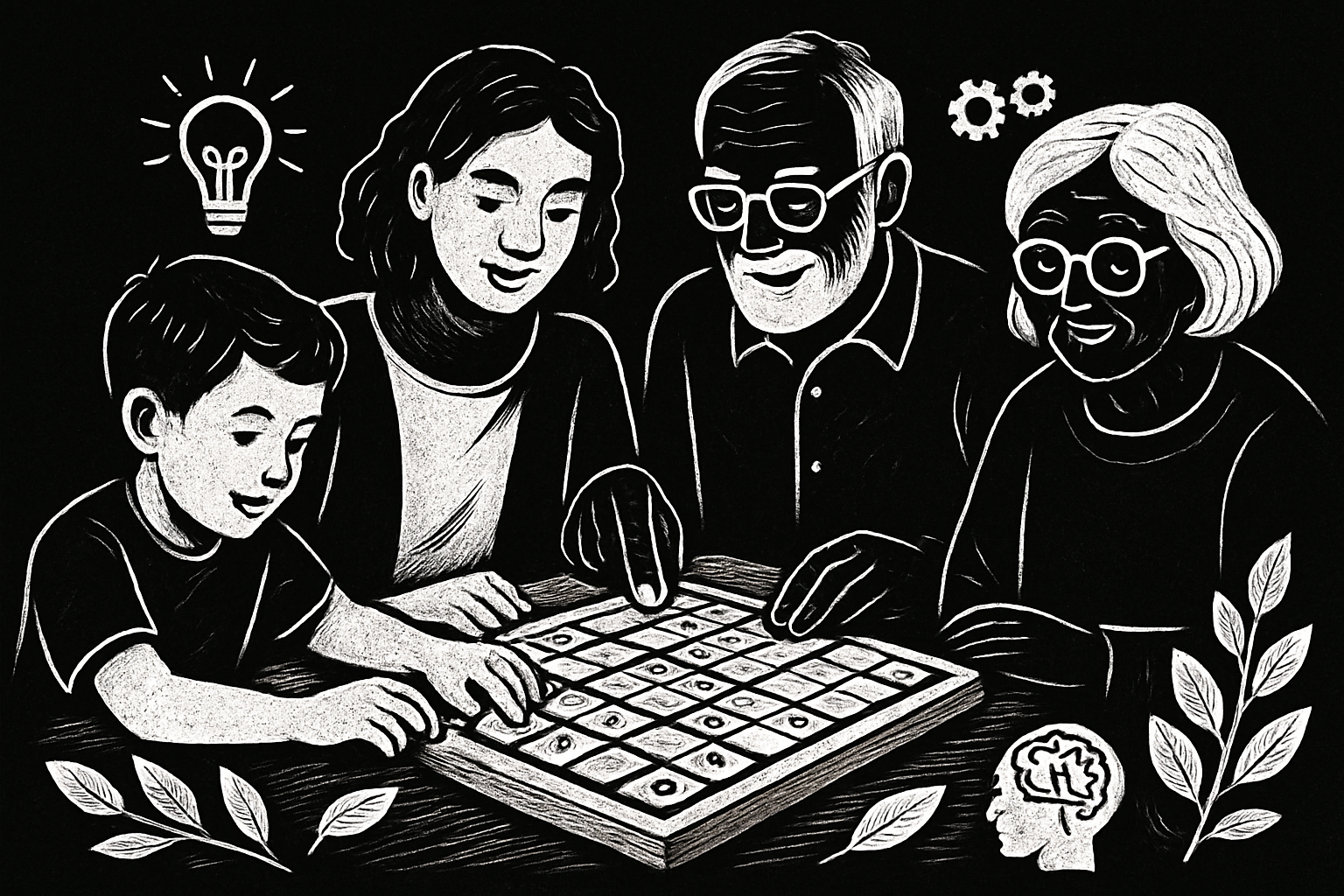
Cognitive and Educational Advantages
Tackling a sudoku wooden puzzle provides a mental challenge that sharpens your brain in surprising ways. Each move demands logical thinking, pattern recognition, and problem-solving. Scientific studies have shown that regular puzzle play can reduce the risk of cognitive decline by up to 30%. In fact, Sudoku's Impact on Cognitive Function is supported by research highlighting improved memory, reasoning, and mental flexibility.
Educators have embraced the sudoku wooden puzzle as a hands-on tool for STEM development in classrooms. The tactile nature of moving wooden tiles boosts memory retention and concentration, especially for visual and kinesthetic learners. Seniors, too, find that this puzzle format helps keep their minds active and engaged.
Compared to digital screens, sudoku wooden puzzle sessions mean less eye strain and deeper focus. The physical act of placing tiles is an exercise for both mind and hand, making every solved puzzle a mini workout for your brain.
Social and Emotional Benefits
A sudoku wooden puzzle brings people together in ways that digital games simply can’t. Family game nights become more memorable when everyone gathers around a wooden board, sharing strategies and celebrating small victories. This collaborative play fosters patience, perseverance, and a sense of achievement.
Many users report that the calming ritual of arranging wooden tiles helps reduce anxiety and stress. The tactile, repetitive motions encourage mindfulness, making sudoku wooden puzzle sessions a natural stress-relief activity. It’s easy to teach newcomers, so all ages can join in and bond over a shared challenge.
Inclusivity is another advantage—children, adults, and seniors can enjoy the same puzzle, adapting rules or difficulty as needed. The sudoku wooden puzzle is more than a solo challenge; it’s a tool for connection and emotional well-being.
Environmental and Aesthetic Appeal
Choosing a sudoku wooden puzzle is a step toward eco-friendly entertainment. These puzzles are crafted from sustainable woods like bamboo, rubberwood, or maple, and finished with non-toxic materials. Unlike disposable paper or plastic puzzles, a well-cared-for wooden board can last for generations.
Many sudoku wooden puzzle designs double as art pieces. Artisanal boards with engraved numbers and unique grains add warmth and character to any room. They make thoughtful, lasting gifts—perfect for birthdays, holidays, or special occasions.
With consumer demand for sustainable, beautiful products on the rise in 2025, investing in a sudoku wooden puzzle means bringing home not just a game, but an heirloom-quality treasure that’s both functional and stylish.
Step-by-Step Guide: How to Play a Sudoku Wooden Puzzle
Ready to dive into the world of hands-on logic and tactile fun? Playing a sudoku wooden puzzle is a rewarding experience for all ages and skill levels. This step-by-step guide will help you set up, learn the rules, solve your first puzzle, and even tackle advanced 3D versions. Let’s get started!

Setting Up Your Wooden Sudoku Puzzle
Unpacking your sudoku wooden puzzle is the first step to a great solving session. Most sets include a sturdy board, number tiles or cubes, and a storage compartment for easy organization.
Start by removing all pieces and laying them out. Check that you have all the tiles numbered 1 to 9 for each row, column, or face (for 3D puzzles). Some boards come with a booklet of puzzles or printed cards—keep these handy for reference.
Arrange the board on a flat surface with good lighting. If you’re using a classic 9×9 board, make sure each section is clear of clutter. For 3D cubes, such as the popular Kubiya model, separate the pieces and familiarize yourself with the cube faces.
Tips to stay organized:
- Use built-in drawers or pouches for storing extra tiles.
- Sort tiles by number or color to speed up setup.
- Keep a soft cloth nearby to wipe the board before and after play.
Taking a moment to organize your sudoku wooden puzzle pieces makes the solving process smoother and more enjoyable.
Learning the Rules: Sudoku Basics
The core objective of a sudoku wooden puzzle is simple but addictive: fill every row, column, and box (or each face of a cube) so that each number from 1 to 9 appears only once in each grouping. The challenge comes from the starting clues—some tiles are fixed in place, while others are left blank for you to solve.
Here’s a quick breakdown of the basics:
- Rows and Columns: Each must contain every number 1–9, with no repeats.
- Boxes: In 2D puzzles, the 9 smaller boxes (3×3) also require unique numbers.
- 3D Cubes: Every face of the cube follows the same rule—each number appears only once per face.
Some wooden sets introduce variations, such as colored tiles or engraved numbers for visual clarity. 3D sudoku wooden puzzle variants may require you to solve all faces at once, adding an extra layer of challenge.
If you’re new to the game, you can find a helpful introduction to the rules and strategies at the How to Play Sudoku page.
Remember, the tactile nature of a sudoku wooden puzzle means you can physically move tiles around, making it easier to visualize possibilities and test combinations without erasing pencil marks.
Solving Your First Puzzle: A Chronological Walkthrough
Now, let’s walk through solving your first sudoku wooden puzzle step by step. Here’s a practical approach:
- Identify Given Numbers: Begin by placing the provided tiles or noting fixed cubes on the board.
- Fill in the Obvious: Look for rows, columns, or boxes with only one missing number and fill those in.
- Process of Elimination: For each empty spot, consider which numbers are missing from that row, column, and box.
- Mark Possibilities: Use extra tiles or small markers to note possible numbers for tricky spaces.
- Cross-Check: Regularly scan for conflicts—no duplicate numbers allowed in any grouping.
- Place with Confidence: Once you’re certain, place the tile or cube in its spot.
- Troubleshooting: If you get stuck, backtrack by removing recent tiles and reassessing your options.
Here’s a quick table to visualize the process:
| Step | What to Do |
|---|---|
| Start | Place given tiles |
| Obvious Blanks | Fill in easy spots |
| Elimination | Use logic to narrow options |
| Marking | Note possibilities with spare tiles |
| Cross-Check | Check for duplicate numbers |
| Confirm | Place tiles when sure |
| Troubleshoot | Backtrack if stuck |
Common beginner mistakes:
- Forcing a tile that doesn’t fit logically.
- Ignoring the rules for boxes or cube faces.
- Not double-checking for duplicate numbers.
Stick with it! Every sudoku wooden puzzle gets easier with practice, and your solving speed will improve over time.
Transitioning from 2D to 3D Wooden Sudoku
Ready for a bigger challenge? 3D sudoku wooden puzzle cubes bring a whole new dimension to your logic skills. Unlike flat boards, every move on a cube affects multiple faces, so you’ll need to think several steps ahead.
What makes 3D puzzles unique:
- Each face must be solved simultaneously.
- Moving one cube can change the possibilities on adjacent faces.
- Visualization and planning are key—try to picture the whole cube as you solve.
Tips for tackling 3D sudoku wooden puzzle challenges:
- Work on one face at a time, then cross-check with neighboring faces.
- Use spare cubes or color-coded markers to keep track of potential numbers.
- Don’t rush—complex 3D puzzles can take hours, but the satisfaction is worth it.
Many solvers find that transitioning to 3D increases their appreciation for the tactile and strategic nature of the sudoku wooden puzzle. Whether you’re a beginner or an expert, there’s always a new challenge waiting in the world of wooden Sudoku.
Advanced Tips and Strategies for Solving Wooden Sudoku Puzzles
Ready to level up your sudoku wooden puzzle skills? Solving these tactile brain-teasers goes far beyond filling in numbers—mastering advanced strategies transforms the entire experience. Whether you're aiming for speed, accuracy, or simply want a greater challenge, the following tips will help you become a true sudoku wooden puzzle pro.
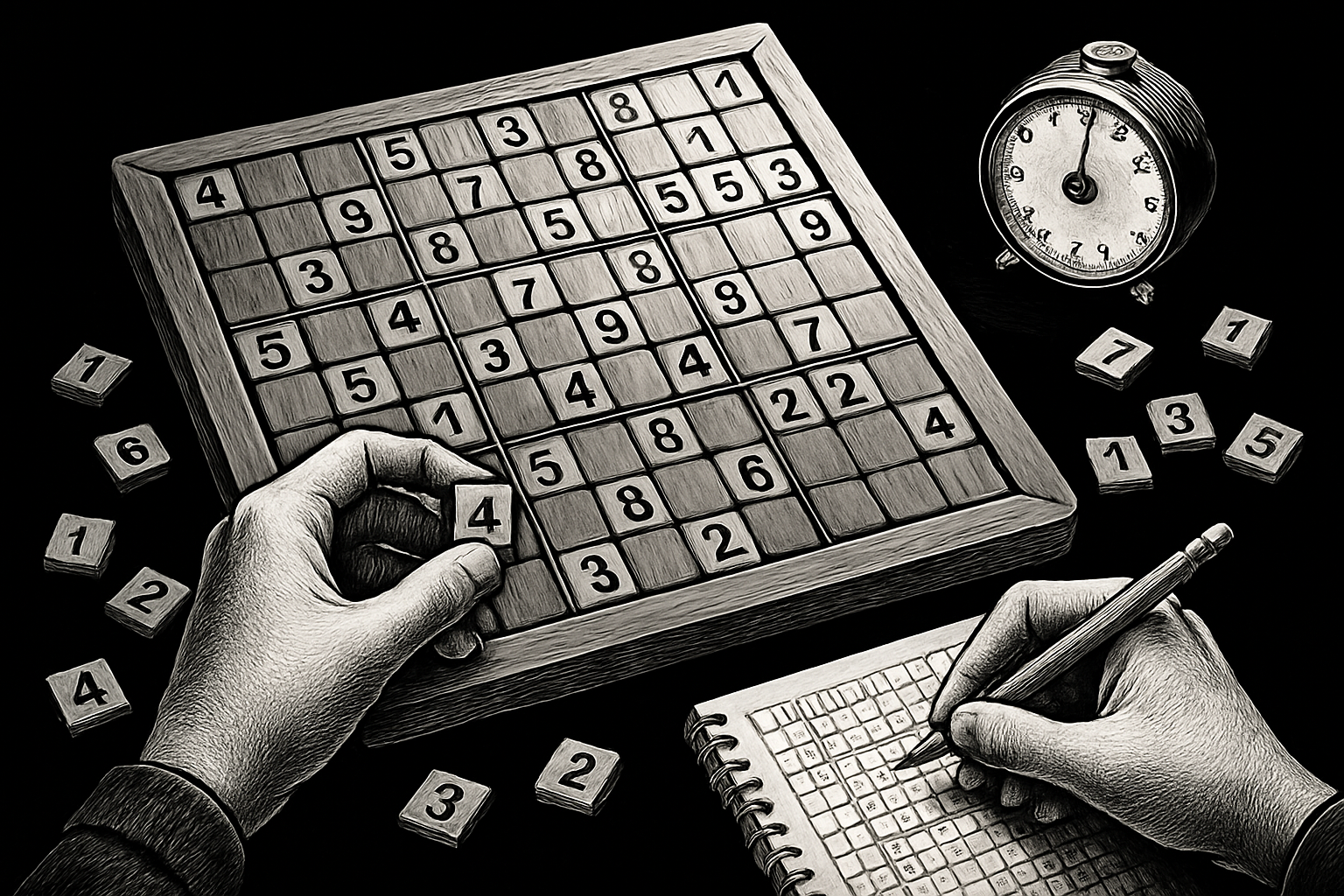
Pattern Recognition and Logical Techniques
To truly excel at a sudoku wooden puzzle, you need to spot patterns and apply advanced logic. The most skilled solvers rely on techniques like naked singles, hidden pairs, and more complex moves such as X-Wing and Swordfish.
Here's a quick comparison of some top logical strategies:
| Technique | Description | When to Use |
|---|---|---|
| Naked Single | One possible number in a cell | Early/Mid Game |
| Hidden Single | One possible cell for a number in a row/box | Early/Mid Game |
| Naked Pair | Two cells in a unit share the same two options | Mid/Late Game |
| X-Wing | Two rows/columns restrict a number’s position | Mid/Late Game |
| Swordfish | Three rows/columns restrict possibilities | Advanced Puzzles |
When working with a sudoku wooden puzzle, use removable tiles for "pencil marks." Place tiles sideways or upside down to track possible numbers for each cell. As you eliminate options, turn them right side up for certainty.
Step-by-step, try this: Find a row with only one missing number. Use process of elimination to fill it in. If you spot a naked pair (two cells in a box with the same two possibilities), remove those numbers from the rest of the box. This hands-on method keeps your mind sharp and your fingers busy.
Managing Mistakes and Improving Accuracy
Even the best sudoku wooden puzzle enthusiasts make mistakes. The key is learning to catch and correct them efficiently. Because you're working with physical pieces, it's easier to backtrack—just remove tiles rather than erasing or using an "undo" button.
To minimize errors:
- Double-check each row, column, and box before locking in a tile.
- Use color-coded or magnetic tiles to track uncertain moves.
- Mark possible numbers on a notepad if your board doesn't allow for note tiles.
- If you discover a conflict, retrace your last few moves, removing tiles until you find the mistake.
- Practice patience; rushing leads to more errors.
The tactile nature of a sudoku wooden puzzle makes error correction less stressful and more intuitive. Many solvers find that physically handling the pieces helps them visualize and avoid repeat mistakes.
Increasing Difficulty: Customizing Your Challenge
Once you’ve mastered the basics, take your sudoku wooden puzzle sessions to the next level by customizing the challenge. Try removing more starting clues for a harder game, or use a blank board to create your own puzzles.
Ideas to ramp up the difficulty:
- Adjust the number of starting tiles for varying challenge levels.
- Compete with family or friends: set up custom puzzles and race to finish.
- Explore artisan sets with colored tiles or 3D formats for a new twist.
- Participate in puzzle swaps with other enthusiasts for fresh challenges.
For those seeking more resources or community competitions, explore Sudoku Games and Resources for guides, puzzle variants, and expert tips to keep your skills sharp.
Time Challenges and Competitive Play
Want to see how quickly you can solve a sudoku wooden puzzle? Set a timer and challenge yourself to finish faster each time. Many solvers enjoy organizing friendly competitions or joining local Sudoku clubs for group play.
Ways to add a competitive edge:
- Use a stopwatch to track your solving times and set personal bests.
- Host family tournaments with prizes for the fastest or most accurate solver.
- Join online communities or in-person clubs dedicated to sudoku wooden puzzle enthusiasts.
- Try advanced puzzles, like 3D cubes, for marathon solving sessions.
After 2023, in-person Sudoku competitions have become more popular, with events focused on both speed and creativity. Whether you’re a solo solver or enjoy group play, competitive sudoku wooden puzzle experiences push you to refine your strategies and think on your feet.
Care, Maintenance, and Display of Wooden Sudoku Puzzles
Caring for your sudoku wooden puzzle doesn't just keep it looking great—it preserves its playability and sentimental value for years to come. Whether you own a classic board, a 3D cube, or an artisanal set, a little routine maintenance goes a long way. Let’s explore how to keep your puzzle in top shape, store it safely, and even turn it into a home décor showpiece or a memorable gift.
Cleaning and Preserving Your Puzzle
Routine cleaning is essential for maintaining the beauty and function of your sudoku wooden puzzle. Start by dusting the board and tiles with a soft, dry cloth. For deeper cleaning, especially if your puzzle is made from rubberwood, bamboo, or maple, use a slightly damp cloth—never soak the wood, as excess moisture can cause warping.
Every few months, apply a small amount of natural oil or wax, such as mineral oil or beeswax, to condition the wood. This keeps your sudoku wooden puzzle smooth, prevents cracking, and enhances its natural luster. Avoid harsh chemicals or abrasive pads, which can damage finishes.
Many users report that with gentle care, their sudoku wooden puzzle remains vibrant and sturdy for years. Always keep your puzzle out of direct sunlight and away from humid areas to prevent fading and swelling. These simple habits can extend your puzzle’s life and maintain its tactile appeal.
Storage and Organization
Proper storage is just as important as cleaning when it comes to your sudoku wooden puzzle. Organize tiles or cubes in designated compartments, drawers, or sturdy pouches to prevent loss or scratches. Many deluxe sets include built-in storage solutions, making it easy to keep everything in place after each game.
If you’re playing with family or young children, consider labeling or color-coding tiles for easier sorting. Store your sudoku wooden puzzle in a cool, dry area—preferably in a box or on a shelf away from heavy objects that could cause dents.
Some puzzle enthusiasts opt for display boxes with glass lids, combining protection with a showcase effect. Keeping pieces organized not only protects your investment but also ensures every play session starts smoothly and stress-free.
Display Ideas and Gifting Tips
A sudoku wooden puzzle can be much more than a game—it’s a statement piece and a thoughtful gift. Display your artisanal board on a bookshelf, coffee table, or dedicated puzzle stand to highlight its craftsmanship. Engraved boards with personalized messages make perfect gifts for birthdays, anniversaries, or holidays.
For creative gifting, package the puzzle with a handwritten note or include a set of custom tiles. The rising trend of eco-friendly, handcrafted puzzles has made them popular presents for all ages. According to 2025 Puzzle Market Trends, unique wooden puzzles are increasingly sought after for their lasting appeal and aesthetic value.
Whether for play, décor, or gifting, your sudoku wooden puzzle is a versatile treasure. With a bit of care and creativity, it can be enjoyed—and admired—for generations.
Best Wooden Sudoku Puzzles to Try in 2025
Looking for the perfect sudoku wooden puzzle to challenge your mind and elevate your game nights in 2025? Whether you’re a seasoned solver or a newcomer, the latest selection of wooden Sudoku puzzles offers something for everyone. Let’s explore the best options, from classic boards to innovative 3D cubes, travel sets, and artisan-crafted treasures.
Top Picks: Classic and Innovative Boards
If you want a sudoku wooden puzzle that’s both timeless and satisfying, classic 9×9 boards remain the gold standard. These sets—like the WE Games Deluxe Sudoku Board—feature sturdy wooden frames, removable tiles, and clear number markers. The tactile feedback of moving real wooden pieces enhances your problem-solving experience in a way screens never could.
Let’s look at a quick comparison of classic and innovative boards:
| Board Type | Features | Pros | Cons |
|---|---|---|---|
| Classic 9×9 | Removable tiles, markers | Traditional feel, easy | Not as portable |
| Innovative | Colored tiles, engravings | Unique design, variety | Pricier |
Classic boards are ideal for family play and display. Newer versions may include magnetic tiles or engraved numbers for extra flair. Whether you’re upgrading from paper or gifting to a puzzle lover, a classic sudoku wooden puzzle is always a hit.
3D Wooden Sudoku Cubes and Challenging Variants
Ready for a twist? 3D wooden Sudoku cubes, like the Kubiya Games Wooden Sudoku Cube Puzzle, add an exciting layer of complexity. Each face of the cube must satisfy Sudoku rules, requiring you to think in three dimensions. These puzzles often consist of 27 individual wood pieces, making every move affect multiple faces at once.
Fans say these 3D puzzles are the logical next step for hardcore sudoku wooden puzzle enthusiasts. Beginners may need extra time—some spend over 12 hours solving their first cube—but the sense of accomplishment is immense. Compared to flat boards, 3D variants offer higher replay value and a more intense brain workout.
Portable and Travel-Friendly Wooden Sudoku Sets
If you’re always on the go, a sudoku wooden puzzle in a compact, travel-friendly format is a smart choice. Mini boards and magnetic sets are lightweight, fitting easily in bags or backpacks. Many come with built-in storage pouches or drawers to keep pieces organized.
Popular travel sets include magnetic tiles that snap securely in place, making them perfect for long car rides or flights. Families report these puzzles are a lifesaver during trips, keeping everyone entertained and mentally sharp. Some sets even double as educational tools for kids learning numbers and logic.
Artisanal and Custom-Made Sudoku Wooden Puzzles
Looking for something truly special? Artisanal sudoku wooden puzzle boards are handcrafted from premium woods like maple, bamboo, or walnut. Many feature engraved numbers, intricate inlays, or custom designs. These puzzles aren’t just games—they’re conversation pieces and heirlooms.
Personalization is a big trend in 2025. Shoppers can choose custom wood types, have names or messages engraved, or select unique color schemes. Artisanal boards are popular as gifts for weddings, anniversaries, and holidays. Their durability and beauty mean they’re likely to be cherished for years.
Tips for Choosing the Right Wooden Sudoku Puzzle
With so many options, how do you pick the best sudoku wooden puzzle for your needs? Consider the following:
- Age & Skill Level: Beginners may prefer classic boards; advanced solvers might love 3D cubes.
- Intended Use: Solo play, family game nights, or gifting?
- Features: Removable or magnetic tiles, storage, engraving.
- Budget: Sets range from affordable to luxury.
- Where to Buy: Reputable online retailers and specialty stores offer a wide selection.
Reading user reviews can make a difference. For more puzzle inspiration, check out the Category: Sudoku Puzzles for a curated list of styles and difficulty levels.
Choosing the right sudoku wooden puzzle is all about matching your preferences to the right design. With the latest trends and options for 2025, there’s never been a better time to find your perfect puzzle.
Frequently Asked Questions About Sudoku Wooden Puzzles
Curious about sudoku wooden puzzle challenges, care, and tips? You’re not alone! Here are the answers to the most common questions to help you get the most out of your puzzle experience.
Common Challenges and Solutions
Getting stuck on a sudoku wooden puzzle is part of the fun, but it can be tricky. If you find yourself lost, take a step back and scan the board for obvious numbers you might have missed. Using removable tiles, you can easily test possibilities without commitment.
Lost a piece? Many brands offer replacement tiles, so check with the manufacturer. For younger players or beginners, try simplifying the puzzle by providing extra starting clues or focusing on smaller grids.
Remember, patience is key. Mistakes are part of the learning curve with any sudoku wooden puzzle.
Wooden vs. Digital Sudoku: Which is Better?
Both formats have their perks, but a sudoku wooden puzzle offers a unique tactile experience that digital versions can’t match. Moving physical tiles helps with memory and focus, and many find it more satisfying and less straining on the eyes.
Digital Sudoku can be more convenient for travel or quick games. However, studies highlight that physical puzzles may provide deeper engagement and greater cognitive benefits. For more on this, see Sudoku's Role in Brain Health.
For optimal results, many puzzle fans enjoy using both—a sudoku wooden puzzle for focused sessions and digital apps for practice on the go.
Cleaning, Maintenance, and Longevity
To keep your sudoku wooden puzzle looking its best, dust it regularly with a soft, dry cloth. Avoid water or harsh cleaners, as these can damage wood. For deeper cleaning, use a slightly damp cloth and dry immediately.
If your tiles start to warp or fade, natural oils or gentle wood wax can restore shine and durability. Store your puzzle in a cool, dry place away from sunlight to prevent warping.
With proper care, a sudoku wooden puzzle can last for years and even become a cherished family heirloom.
Where to Find More Sudoku Resources
Looking to level up your sudoku wooden puzzle skills? There are plenty of resources available. Puzzle books, online guides, and dedicated forums offer tips, new puzzles, and community support for all levels.
Many enthusiasts join local clubs or online groups to share strategies and compete. For a deeper dive into the health benefits of Sudoku, check out Health Benefits of Sudoku Puzzles.
Connecting with other sudoku wooden puzzle fans can make your puzzle journey even more rewarding.
If you’re feeling inspired to take your newfound Sudoku skills from the wooden board to even more challenges, why not keep the fun going? We’ve explored the tactile joy and clever strategies behind wooden Sudoku puzzles, but there’s a world of puzzles waiting for you online too. Whether you want to sharpen your logic or just relax with a quick game, you can dive right in and practice what you’ve learned—anytime, anywhere. Ready to put your skills to the test and see how far you can go? Play Sudoku Online!

